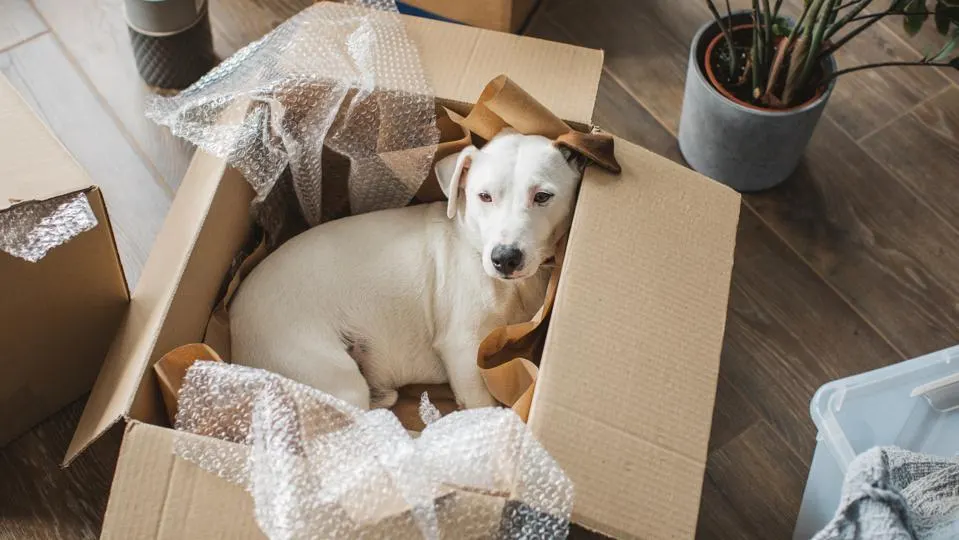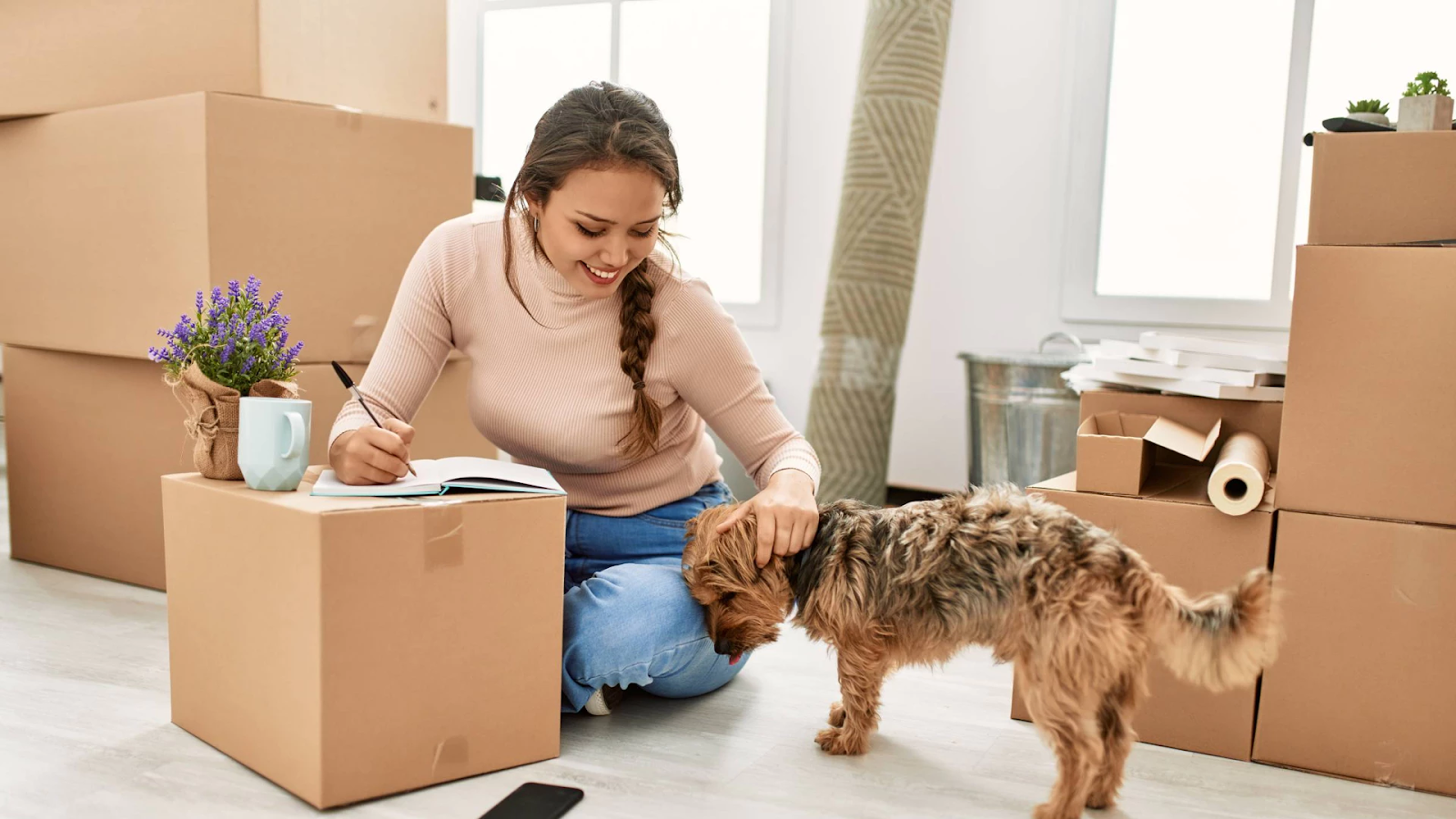Moving to a new home is a significant life event, and it affects not only you and your family but also your beloved pets. While the prospect of a new home can be exciting, it can also be stressful for your furry companions. To ensure a smooth transition for both you and your pets, it’s essential to consider their needs and take appropriate steps. In this comprehensive guide, Wolley Movers shares the dos and don’ts of moving with pets to make the process as stress-free as possible.
Section 1: The Dos
1.1 Plan Ahead
Do: Start planning your move well in advance. Pets thrive on routine, so maintaining a sense of normalcy during the transition is crucial. Create a detailed moving timeline, including important dates, such as packing, loading, and moving day, to minimize disruptions to your pet’s routine.
1.2 Visit the Vet
Do: Schedule a visit to the veterinarian before your move. Ensure your pet is up to date on vaccinations and ask for a copy of their medical records. Discuss any concerns with your vet, and inquire about recommendations for a new veterinarian in your destination area.
1.3 Update Identification
Do: Ensure your pet has proper identification. If your pet is microchipped, make sure the contact information is current. Consider getting a new ID tag with your new address and contact details. This is especially important for cats that might try to explore their new surroundings.
1.4 Pack a Pet Essentials Kit
Do: Prepare a separate essentials kit for your pet. Include their food, water bowls, medication, toys, blankets, and grooming supplies. Having these items readily available during the move will provide comfort and familiarity for your pet.
1.5 Gradual Introduction to Packing
Do: Introduce packing materials gradually. Pets can become anxious when they see their home in disarray. Start packing in rooms your pet doesn’t frequently visit and gradually work your way to the areas they are more attached to. Keep their favorite toys and blankets accessible as long as possible.
1.6 Maintain Routine
Do: Stick to your pet’s regular schedule as closely as possible. Feed them, walk them, and play with them at the same times you normally would. Maintaining a routine will help your pet feel secure amidst the changes.
1.7 Secure a Safe Space
Do: On moving day, designate a quiet and secure space for your pet away from the hustle and bustle. This could be a bedroom or a bathroom with their essentials kit. Make sure the room is escape-proof and comfortable, and inform the movers or helpers not to disturb this space.
1.8 Consider Pet Transport Services
Do: If you’re moving long-distance or internationally, consider using a professional pet transport service. These experts can provide specialized care and ensure your pet’s safety during transit.
1.9 Gradual Introduction to the New Home
Do: After you’ve arrived at your new home, allow your pet to explore their new environment gradually. Start with one room and gradually introduce them to the rest of the house. Supervise their exploration to ensure their safety.
1.10 Update Pet Information
Do: Update your pet’s information with your new address and contact details on their ID tag and microchip. Also, notify your previous and new veterinarians about the move and request a transfer of medical records.
Section 2: The Don’ts
2.1 Don’t Surprise Your Pet
Don’t: Surprising your pet with the chaos of moving day can be highly stressful. Pets thrive on predictability, so avoid unexpected changes in their routine. Prepare them gradually for the upcoming move.
2.2 Don’t Skip the Vet Visit
Don’t: Neglect the vet visit before moving. It’s crucial to ensure your pet is healthy for the journey and that you have any necessary medications or recommendations from the vet.
2.3 Don’t Use Sedation Without Professional Guidance
Don’t: Sedating your pet without consulting a veterinarian is risky. Only use sedatives if prescribed and monitored by a veterinarian. Sedation can affect pets differently, and it’s essential to ensure their safety during the move.
2.4 Don’t Let Your Pet Roam During Transit
Don’t: Allow your pet to roam freely in the car during transit. This can be dangerous and distracting for the driver. Secure your pet in a pet carrier or with a seatbelt harness designed for pets.
2.5 Don’t Skip Breaks
Don’t: If you’re traveling a long distance, don’t forget to take breaks. Stop every few hours to allow your pet to stretch their legs, have a drink, and use the bathroom.
2.6 Don’t Unleash Your Pet Immediately
Don’t: When you arrive at your new home, resist the urge to let your pet roam freely right away. First, ensure that the environment is safe, and gradually introduce them to one room at a time.
2.7 Don’t Neglect Safety Precautions
Don’t: Overlook safety precautions. Ensure that gates, fences, and windows are secure to prevent your pet from escaping. Check for potential hazards in your new home, such as toxic plants or accessible cleaning products.
2.8 Don’t Rush the Transition
Don’t: Rush the transition process. Moving can be overwhelming for pets, and they may take some time to adjust to their new surroundings. Be patient and provide plenty of love and reassurance.
2.9 Don’t Leave Your Pet Alone Too Soon
Don’t: Leave your pet alone in their new home too soon after the move. Spend time with them to help them acclimate to the new environment and build a sense of security.
2.10 Don’t Forget to Update Records
Don’t: Forget to update your pet’s records with your new address, contact information, and veterinarian. This is crucial for their safety and well-being in case of emergencies.
Section 3: Additional Tips
3.1 Consider a Pet Sitter
If the moving process is too chaotic or stressful for your pet, consider hiring a pet sitter or asking a trusted friend or family member to look after your pet during the most hectic phases of the move.
3.2 Reintroduce Routine Gradually
As you settle into your new home, reintroduce your pet’s routine gradually. This includes feeding, playtime, and walks. Gradual adjustments can help ease their transition.
3.3 Seek Professional Help
If your pet exhibits signs of extreme stress or anxiety during the move, consider consulting a professional animal behaviorist or trainer. They can provide guidance on how to help your pet adapt to their new environment.
3.4 Create a Familiar Environment
In your new home, try to recreate a familiar environment for your pet. Place their bed, toys, and food and water bowls in similar locations to those in your previous home.
3.5 Explore the New Neighborhood Together
Take your pet on walks around the new neighborhood so they can become familiar with their surroundings. This can help reduce anxiety and make them feel more at home.
Moving with pets requires careful planning and consideration of their needs. By following the dos and don’ts outlined in this guide, you can minimize stress and ensure a smooth transition for your furry family members. Remember that patience, love, and reassurance go a long way in helping your pets adapt to their new home. With proper preparation, moving can be a positive experience for both you and your beloved companions.
At Wolley Movers, we understand the importance of your pet’s well-being during a move. If you have any questions or need assistance with your upcoming relocation, feel free to reach out to us. We’re here to make your move as stress-free as possible for your entire family, including your furry friends.








